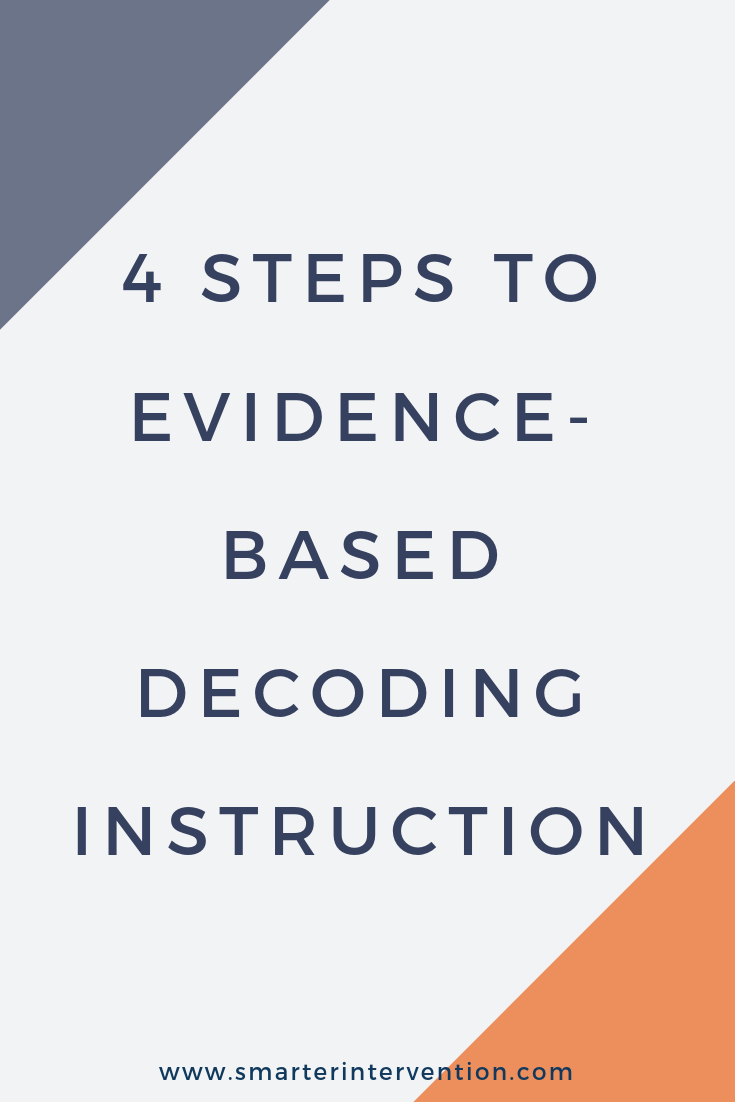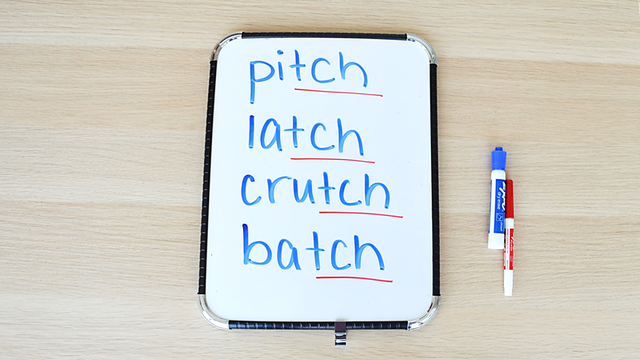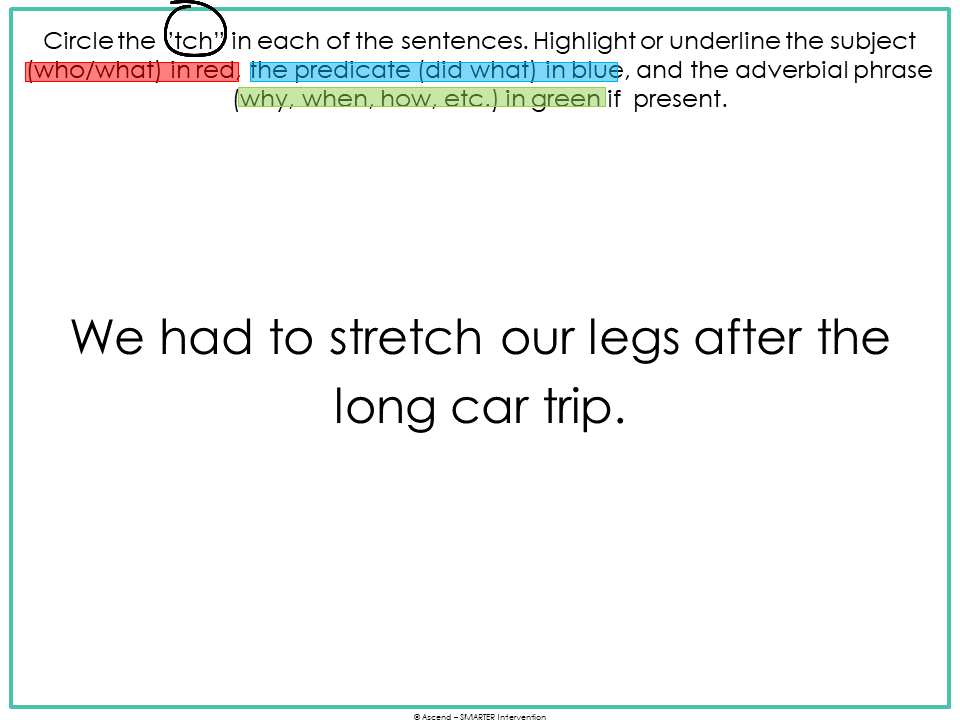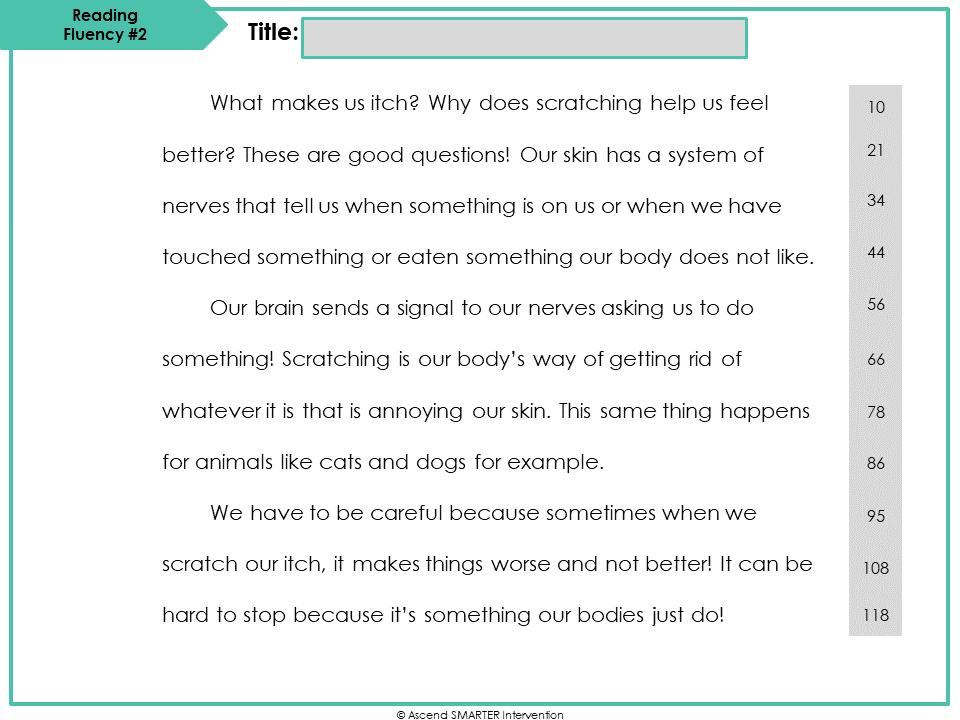4 Steps to Evidence-Based Decoding Instruction
There is a lot to providing high-quality reading instruction. One of the most important pieces we always want to focus on is providing explicit decoding strategies.
Research indicates that explicit instruction is one of the best ways to support our students’ reading ability! Check out this article to read more about the research on explicit phonics instruction.
What exactly does this look like?
First - Decoding Introduction
We always start by explicitly teaching phonogram patterns. We can begin by having students listen to words that incorporate the pattern we are going to be teaching.
For example, batch, catch, pitch, etch - what is the sound in each of these words that is the same? (/ch/)
This is helpful to determine whether our students can discriminate between the different sounds within words which is one component of auditory discrimination (this falls under the larger umbrella of phonological awareness). From there, we can progress to showing students exactly what that sound pattern looks like.
For example, tch says /ch/ while showing them what tch looks like when it’s in the written form. This connects the phonological processing (sound processing) to the orthographic processing (visual processing) of our sounds and letters. We have our students write out the letters that work together to make the sound (phonogram) three times while saying each letter and the sound to help create that multi-sensory neural pathway. For example, T-C-H says /ch/, T-C-H says /ch/, T-C-H says /ch/.
Once students see this connection, they can progress to reading words that include these patterns. We like to have students begin by highlighting or underlining the pattern so that they can make sure they are attending to the specific pattern we just explained.
We also like to explain to students which syllable type these specific patterns follow. For example, tch is a pattern that is used with closed syllables.
tch says /ch/ at the end of a closed syllable
Then, we remind our students that in closed syllables a vowel sound is always short. If this is all new, no worries - you can learn more about closed syllables here!
Second - Decoding in Sentences
After our students have practiced a new pattern at the sound level and the word level, we want to progress to reading at the sentence level. This is important because it helps students see the words in context. Instead of just practicing words in isolation, we are getting closer to “real reading” or reading that students would be required to do when reading a book or reading something for class (a worksheet, math problem, etc.). When asking students to read at the sentence level, we start by asking them to identify the words with the pattern we just taught.
It’s also an opportunity to begin working on sentence syntax, fluency, and comprehension by asking them to identify who/what (the subject), is/does/did what (the predicate), when/where/why/how (the adverbial clause - if present).
Third - Decoding in Controlled Text Passages
Once we’ve introduced the pattern, practiced reading words, and practiced sentences with the words we want to move into controlled text decoding. A controlled text is a text that is designed to provide exposure to the pattern the students have just learned. For example, if we were teaching the TCH pattern, we would want a text that has words containing the TCH pattern for them to practice. This allows students to begin reading paragraph and passage-level texts to focus on decoding, vocabulary, fluency, and comprehension.
At this level, we ask students to:
Find words that contain the target pattern (e.g., tch)
Find words they cannot sound out
Find words they don’t know the meaning of
Fourth - Generalizing Phonics to Non-Controlled Texts
Finally, we want students to practice finding the pattern in everyday reading or “non-controlled texts.” A non-controlled text means that we haven’t specifically identified whether the text has the specific pattern we are looking for or not. There may be words the students don’t yet have the strategies to “sound out” but this is okay. Students need to have this opportunity, we don’t want to hold back their reading just because we haven’t explicitly taught every concept.
You can begin to have students use this strategy during independent reading times, while reading for other subject areas, or while reading at home. We like to give students a sheet where they can write down each of the words that belong within a specific group.
For example, if we were teaching TCH we might want students to look for words that contain a specific letter for the Letter Find, maybe a short vowel (such as “a”).
Then, they could look for words that follow a specific pattern for the Pattern Find, in this case, we would want them to find words with “tch.”
Finally, we could ask them to find other types of syllables in the Syllable Type Find. In this case, we might choose closed-syllable words since “tch” is used in closed syllables.
We can start by just asking students to find one of these three options (letters, patterns, or syllable types) and then as they are ready, they can progress to finding more patterns.
The more they begin to see these patterns in their everyday reading, the more they will begin to look for these patterns everywhere - which is the entire idea! The point of teaching decoding strategy is for students to apply the strategies to non-controlled texts!
That’s it! The 4 Steps to Evidence-Based Decoding Instruction is really that simple!
If you’re ready to begin using an evidence-based (research-based) systematic framework, using activities like these, then we encourage you to check out the Delivering SMARTER Intervention (DSI) program using the button below.





